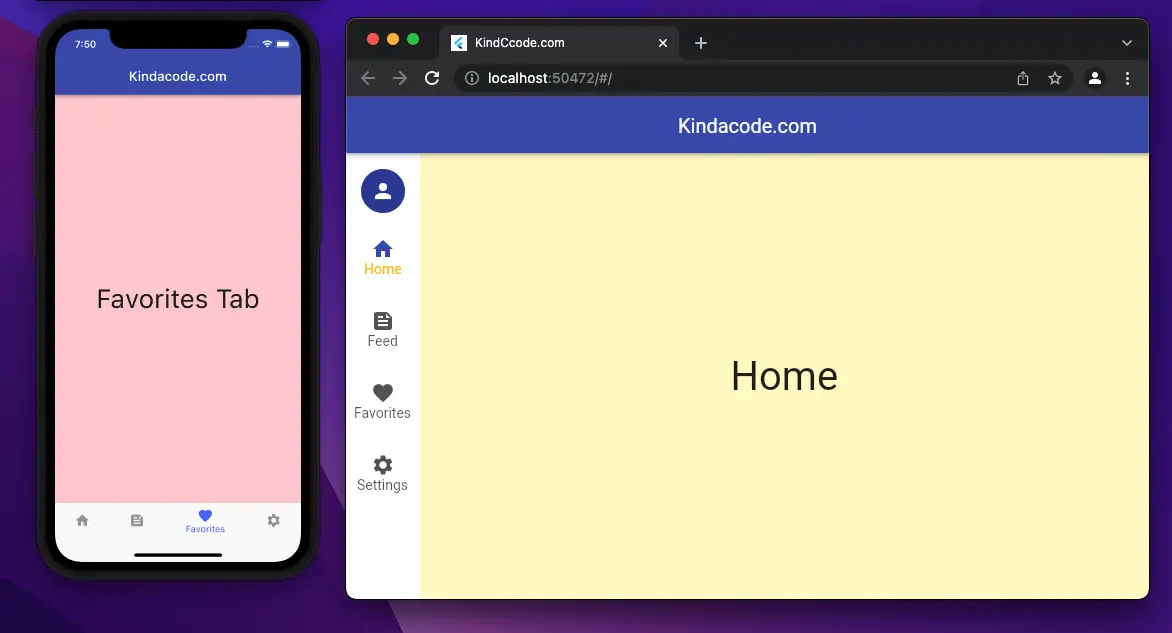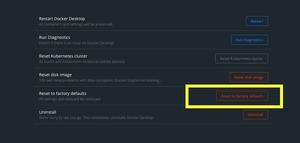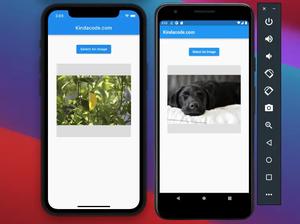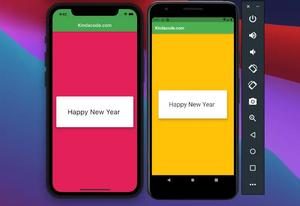
This article shows you how to create an adaptive layout in Flutter by using both NavigationRail and BottomNavigationBar. We’ll have a glance at the concept and then walk through a complete example of applying that concept in practice.
Overview
The NavigationRail widget is used to create a “vertical tab bar” that resides at the left or right of an app. It’s highly fit for wide-screen devices like tablets, laptops, TVs. It typically contains multiple items that let the user easily switch between different views.
The BottomNavigationBar widget is used to create a bottom tab bar that is perfect for smartphones. It consists of multiple tabs that let the user easily navigate between views.
See also: Working with Cupertino Bottom Tab Bar in Flutter
We can use NavigationRail along with BottomNavigationBar to build a modern adaptive layout. When the screen size is large, we display NavigationRail, and when the screen is small, we show BottomNavigationBar. Only one of them appears at a time. To detect the screen width, we can use:
MediaQuery.of(context).size.widthThe Example
App Preview
The app we’re going to build has a navigation rail, a bottom tab bar, and 4 different views: Home, Feed, Favorites, and Settings. Each view is connected with a tab of the bottom tab bar and an item of the navigation rail.
- If the screen width is less than 640 pixels, the bottom tab bar will be rendered while the left navigation rail won’t be shown.
- If the screen width is equal to or greater than 640 pixels, the bottom tab bar won’t be rendered while the left navigation rail will show up.
Here’s how it works:
The Code
Here’s the complete code (with explanations) that produces the app above:
// main.dart
import 'package:flutter/material.dart';
void main() {
runApp(const MyApp());
}
class MyApp extends StatelessWidget {
const MyApp({Key? key}) : super(key: key);
@override
Widget build(BuildContext context) {
return MaterialApp(
// Remove the debug banner
debugShowCheckedModeBanner: false,
title: 'KindCcode.com',
theme: ThemeData(primarySwatch: Colors.indigo),
home: const HomeScreen());
}
}
class HomeScreen extends StatefulWidget {
const HomeScreen({Key? key}) : super(key: key);
@override
State<HomeScreen> createState() => _HomeScreenState();
}
class _HomeScreenState extends State<HomeScreen> {
// The contents of views
// Only the content associated with the selected tab is displayed on the screen
final List<Widget> _mainContents = [
// Content for Home tab
Container(
color: Colors.yellow.shade100,
alignment: Alignment.center,
child: const Text(
'Home',
style: TextStyle(fontSize: 40),
),
),
// Content for Feed tab
Container(
color: Colors.purple.shade100,
alignment: Alignment.center,
child: const Text(
'Feed',
style: TextStyle(fontSize: 40),
),
),
// Content for Favorites tab
Container(
color: Colors.red.shade100,
alignment: Alignment.center,
child: const Text(
'Favorites',
style: TextStyle(fontSize: 40),
),
),
// Content for Settings tab
Container(
color: Colors.pink.shade300,
alignment: Alignment.center,
child: const Text(
'Settings',
style: TextStyle(fontSize: 40),
),
)
];
// The index of the selected tab
// In the beginning, the Home tab is selected
int _selectedIndex = 0;
@override
Widget build(BuildContext context) {
return Scaffold(
appBar: AppBar(
title: const Text('Kindacode.com'),
),
// Show the bottom tab bar if screen width < 640
bottomNavigationBar: MediaQuery.of(context).size.width < 640
? BottomNavigationBar(
currentIndex: _selectedIndex,
unselectedItemColor: Colors.grey,
selectedItemColor: Colors.indigoAccent,
// called when one tab is selected
onTap: (int index) {
setState(() {
_selectedIndex = index;
});
},
// bottom tab items
items: const [
BottomNavigationBarItem(
icon: Icon(Icons.home), label: 'Home'),
BottomNavigationBarItem(
icon: Icon(Icons.feed), label: 'Feed'),
BottomNavigationBarItem(
icon: Icon(Icons.favorite), label: 'Favorites'),
BottomNavigationBarItem(
icon: Icon(Icons.settings), label: 'Settings')
])
: null,
body: Row(
mainAxisSize: MainAxisSize.max,
children: [
// Show the navigaiton rail if screen width >= 640
if (MediaQuery.of(context).size.width >= 640)
NavigationRail(
minWidth: 55.0,
selectedIndex: _selectedIndex,
// Called when one tab is selected
onDestinationSelected: (int index) {
setState(() {
_selectedIndex = index;
});
},
labelType: NavigationRailLabelType.all,
selectedLabelTextStyle: const TextStyle(
color: Colors.amber,
),
leading: Column(
children: const [
SizedBox(
height: 8,
),
CircleAvatar(
radius: 20,
child: Icon(Icons.person),
),
],
),
unselectedLabelTextStyle: const TextStyle(),
// navigation rail items
destinations: const [
NavigationRailDestination(
icon: Icon(Icons.home), label: Text('Home')),
NavigationRailDestination(
icon: Icon(Icons.feed), label: Text('Feed')),
NavigationRailDestination(
icon: Icon(Icons.favorite), label: Text('Favorites')),
NavigationRailDestination(
icon: Icon(Icons.settings), label: Text('Settings')),
],
),
// Main content
// This part is always shown
// You will see it on both small and wide screen
Expanded(child: _mainContents[_selectedIndex]),
],
),
);
}
}Constructors & References
NavigationRail constructor:
NavigationRail({
Key? key,
Color? backgroundColor,
bool extended = false,
Widget? leading,
Widget? trailing,
required List<NavigationRailDestination> destinations,
required int selectedIndex,
ValueChanged<int>? onDestinationSelected,
double? elevation,
double? groupAlignment,
NavigationRailLabelType? labelType,
TextStyle? unselectedLabelTextStyle,
TextStyle? selectedLabelTextStyle,
IconThemeData? unselectedIconTheme,
IconThemeData? selectedIconTheme,
double? minWidth,
double? minExtendedWidth,
bool? useIndicator,
Color? indicatorColor
})BottomNavigationBar constructor:
BottomNavigationBar({
Key? key,
required List<BottomNavigationBarItem> items,
ValueChanged<int>? onTap,
int currentIndex = 0,
double? elevation,
BottomNavigationBarType? type,
Color? fixedColor,
Color? backgroundColor,
double iconSize = 24.0,
Color? selectedItemColor,
Color? unselectedItemColor,
IconThemeData? selectedIconTheme,
IconThemeData? unselectedIconTheme,
double selectedFontSize = 14.0,
double unselectedFontSize = 12.0,
TextStyle? selectedLabelStyle,
TextStyle? unselectedLabelStyle,
bool? showSelectedLabels,
bool? showUnselectedLabels,
MouseCursor? mouseCursor,
bool? enableFeedback,
BottomNavigationBarLandscapeLayout? landscapeLayout
})References:
- Navigation rail: Design (material.io)
- NavigationRail class (flutter.dev)
- NavigationRailDestination class (flutter.dev)
- BottomNavigationBar class (flutter.dev)
Afterword
You’ve learned a simple but effective technique to create a modern adaptive user interface by using NavigationRail and BottomNavigationBar. With this knowledge in mind, you can build more intuitive and engaging apps for a wide range of devices, from smartphones to tablets and laptops. As a result, your apps will gain more and more users and have a higher chance to success.
Flutter is amazing, and there are a lot of things to learn. Keep the ball rolling and moving forward by taking a look at the following articles:
- Flutter & Hive Database: CRUD Example
- Flutter: SliverGrid example
- Flutter AnimatedList – Tutorial and Examples
- Flutter + Firebase Storage: Upload, Retrieve, and Delete files
- How to make an image carousel in Flutter
- How to implement Star Rating in Flutter
You can also check out our Flutter category page or Dart category page for the latest tutorials and examples.



















